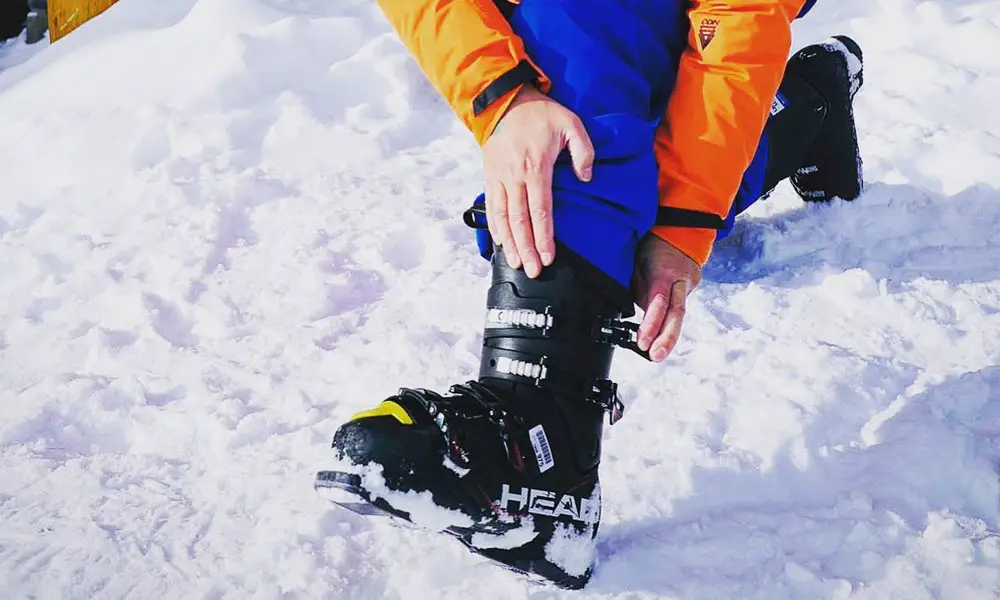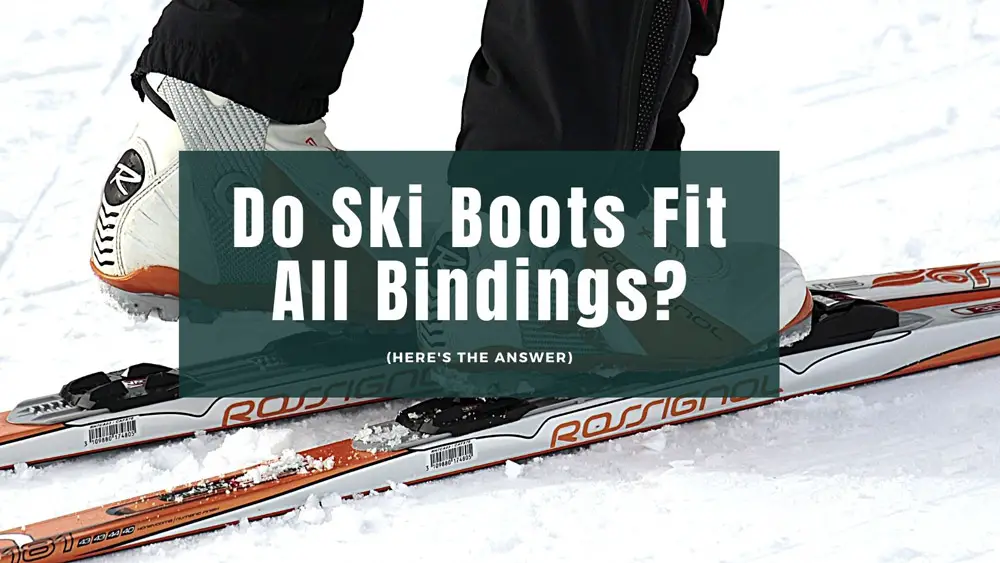Ski boot bindings promote safety and give skiers the confidence to maneuver in different conditions. They allow skiers to control their ski’s turning ability when going down a hill.
Since it releases the ski from the boot, it can avoid injuries that you could sustain when you fall. If you love skiing, you shouldn’t just find the right ski boots. It is also important that you find the right ski boot bindings. A question that I usually get from beginners (and even intermediate) skiers is, do ski boots fit all bindings? We’ll discuss everything you need to know about ski boot bindings.
Do Ski Boots Fit All Bindings?
The answer is simple: there are no universal ski boots that will fit with every binding. If you break your leg or sustain any foot injury while using the wrong type of ski boot and binding, then it would be hard to prove that you didn’t cause yourself harm by skiing with the wrong equipment.
Before you buy a ski boot, it is important to know the compatibility between the ski boot bindings and the boots so you can save yourself from future hassles and headaches. For example, tech bindings are compatible with those boots that have tech inserts. You will also have to check the width of the skis as well as the brake.

Why Does Ski Boot & Binding Compatibility Matter?
Why does it matter to check the ski boot and binding compatibility? Like what we mentioned earlier, it can affect safety and performance. Ski bindings keep your boot attached to your ski. Also, it releases the boot right before you hurt yourself.
Also, you have to understand that different compatibilities exist because of the different functions of boots. For instance, some soles are made not only for skiing but also for walking.
In case you are wondering what could happen if you combine incompatible boots and binding. I personally don’t recommend this because the ski may not release properly. And if this scenario happens, this can lead to injury.
So does it mean that ability to release the ski is just all about compatibility? That’s not the case. You will also have to consider adjustment, maintenance, and wear and tear. For example, if you have a ski binding that already has structural damage due to overuse, then expect the release to be inconsistent as well.
What Type of Ski Boot Soles Do You Have?
There are five types of ski boot soles in the market. Each sole will also work on specific bindings. The International Standards Organization (ISO) came up with three types of soles, namely ISO 5355 (Alpine), ISO 9523 (Touring), and ISO 23223 (Gripwalk). You also have two other soles that are not defined by ISO: WTR and non-compliant soles.
| Alpine Bindings | GripWalk Bindings | MNC Bindings | WTR Bindings | Sole.ID | Tech/Pin Bindings | |
| ISO 5355 – Alpine | ✓ | ✓ | ✓ | ✓ | ✓ | ✓¹ |
| ISO 9523 – Touring | ✓ | ✓ | ✓¹ | |||
| ISO 23223 – GripWalk | ✓ | ✓ | ✓ | ✓ | ✓¹ | |
| Walk To Ride (WTR) | ✓ | ✓ | ✓ | ✓¹ | ||
| Non-Compliant Touring | ✓ |
ISO 5355 Alpine (DIN) Soles
The ISO 5355 ski boots are the most common type of boot sole that you will see in the market. Many call it either DIN or Alpine sole. Based on its appearance, the ISO 5355 sole has a flat profile and is made with plastic. It comes in contact with the boot binding giving the user a smooth and consistent release.
So why use boots with ISO 5355 soles? Alpine soles are compatible with different types of bindings. For convenience reasons, this is preferred by a lot of skiers. ISO 5355 soles are compatible with alpine bindings, MNC bindings, and even GripWalk bindings. If you see tech inserts on the boot, then it can also be used on fit tech bindings.
There are also two types of ISO 5355 soles. You have Type A (adult) and Type C (CHILD).
ISO 9523 Alpine Touring Soles
The ISO 9523 soles, also known as the Alpine Touring soles, were designed after people are having difficulty walking on ski boots that have the ISO 5355 soles. As mentioned, the Alpine soles are usually made of rigid plastic plates.
The ISO 9523 soles are made of rubber materials that usually go with an adjustable AFD (anti-friction device). This type of sole usually has tech fitting and will give you a better experience when walking around.
There are two types of ISO 9523 soles. There’s the GripWalk and the Walk-to-Ride (WTR) soles. Both GripWalk and WTR soles that meet the ISO 9523 standard are compatible with ISO 9523 bindings.
However, don’t be confused since even though GripWalk and Walk-to-Ride soles that meet ISO 9523 standards are compatible with ISO 9523 bindings, not all ISO 9523 boots meet the GripWalk or Walk-to-Ride standards.
ISO 23223 GripWalk Soles
GripWalk has a variety of ski boots in the market. The ISO 23223 GripWalk Soles is another attempt to improve the Alpine soles. It gives a more natural walking stride, plus it also doesn’t compromise when it comes to traction. The GripWalks that meet the ISO 23223 standard are compatible with bindings that have the GripWalk mark. Also, it is compatible with MNC (Salomon/Atomic/Armada), ID (Marker), and AT (Tyrolia) bindings. However, this type of sole may or may not have tech fittings.
WTR (Walk to Ride) Soles
WTR soles are a smart choice if you like both the ISO 5355 standard soles and the ISO 9523 soles. WTR soles bridge the gap between the two. It comes with a consistent release pattern, offers great traction, and is known in the ski industry as a great walking shoe. For the bindings, just look for the WTR logo on the bindings.
Non-compliant soles
There are still a lot of ski boots that don’t fall under the categories that we’ve discussed. It’s common to see non-compliant soles to have shorter designs, smaller toes, and sometimes even with no lugs. However, these ski boots have tech fittings. For these ski boots, you should only use them on low-tech (pin bindings).
Final Thoughts
If you consider skiing, it is always a good idea to have the right ski boots. But also, it is equally important that you know the bindings that will match with your ski boots. Ski boot bindings are important because they can promote safety. It can release the ski properly preventing injuries.
But of course, you also want to consider if you want the type of boots that are also good for walking. Also, it is equally important to have the bindings checked, adjusted, and regularly tested to make sure that everything is working properly.


